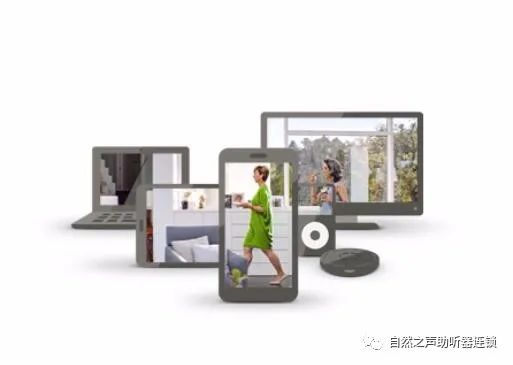Author: Li Aizhu, Manager of Natural Sound Guangxi Region
If you have hearing problems or questions about hearing aids, you can consult Teacher Li Aizhu via WeChat.
Long press the WeChat QR code to identify and get one-on-one hearing health consultation.

Content: The Bluetooth technology in hearing aids allows them to function like Bluetooth headphones for those with normal hearing, making it easy to answer calls, watch TV, and enjoy music. However, many users report that the battery drains more quickly when Bluetooth is turned on. Why is that? It involves two different Bluetooth technologies: classic Bluetooth and Bluetooth Low Energy.

So, what are the main differences between classic Bluetooth and Bluetooth Low Energy in hearing aids?
1. Protocol
1. Bluetooth Low Energy Protocol:
For example, the brands ReSound and Oticon use Bluetooth Low Energy protocol for direct Bluetooth connections, but it can only be applied to Apple devices like iPhones.
2. Classic Bluetooth Protocol:
For example, Phonak/Unitron introduces classic Bluetooth technology for use with Android phones or other feature phones, enabling direct Bluetooth connections to better meet the needs of hearing-impaired users without being restricted by phone model.
2. Power Consumption
Bluetooth technology supports short-distance communication between devices, transmitting information via wireless signals, which has low efficiency, thus increasing power consumption. When Bluetooth is activated, the hearing aid acts like a small base station emitting signals, consuming more power compared to hearing aids without Bluetooth functionality.
Bluetooth technology in hearing aids also has different distinctions, with classic Bluetooth consuming more power than Bluetooth Low Energy. Although many hearing aid brands use BTLE, it still consumes more power than classic Bluetooth. The Phonak brand, which uses classic Bluetooth, has invested heavily in developing the 2.4GHz wireless chip—SWORD3.0 chip, which reduces energy consumption more effectively than standard Bluetooth technology. Generally, hearing aids using Bluetooth Low Energy last longer on battery than those using classic Bluetooth. For the same 312 battery, classic Bluetooth typically lasts about 3-4 days, while Bluetooth Low Energy lasts about 4-5 days.
3. Data Transmission Volume
Compared to Bluetooth Low Energy, classic Bluetooth can carry more data information, allowing for better audio streaming quality and effects. In terms of connection stability, Bluetooth Low Energy may be affected by physical obstructions. When audio is streaming, if someone blocks the signal between the hearing aid and the device, audio transmission can be interrupted in one ear. This issue resolves itself when you move the phone. According to many users’ experiences, classic Bluetooth rarely encounters such problems, primarily due to its higher output power.
4. Direct Connection Functionality
Classic Bluetooth can directly connect to almost any Bluetooth device for wireless audio transmission. It can connect to computers, all types of phones, music players, tablets, and even TVs. However, Bluetooth Low Energy can only directly connect to iPhones and iPads.

5. Making and Receiving Calls
There is a significant difference between classic Bluetooth and Bluetooth Low Energy hearing aids when it comes to making and receiving calls. Classic Bluetooth hearing aids use the hearing aid’s microphone for calls, allowing for completely hands-free operation. You can simply press a button on the hearing aid to answer calls. The hearing aid functions like headphones, transmitting the caller’s voice directly to your ear, and returning your voice through the microphone on the hearing aid. Bluetooth Low Energy hearing aids can transmit the caller’s voice directly to your ear, but you need to speak into the phone’s microphone for them to hear you. This issue can be mitigated by using a relay device, but many people dislike wearing additional equipment.
Using classic Bluetooth technology for hands-free calls is very simple, especially when you cannot pick up the phone for some reason. It provides many benefits, such as convenience when driving.

The direct connection feature of classic Bluetooth is very advantageous. If you really want to save battery, you will be limited by the phone brand and must choose a hearing aid brand with Bluetooth Low Energy technology; or opt for rechargeable hearing aids, although these tend to be larger than non-rechargeable options.
The above outlines the differences between the two Bluetooth technologies. I believe the key point is what functions the user wants to achieve, which should help users in selecting their hearing aids.
END
Natural Sound started in 1996 and currently has over 400 directly-operated chain stores nationwide, making it a well-known hearing aid chain enterprise in China. Over the past 20 years, countless hearing aids fitted by Natural Sound have helped tens of thousands of hearing-impaired individuals. With solid technical strength, high-quality product standards, and integrity in business, it has gained recognition from a wide range of users.
